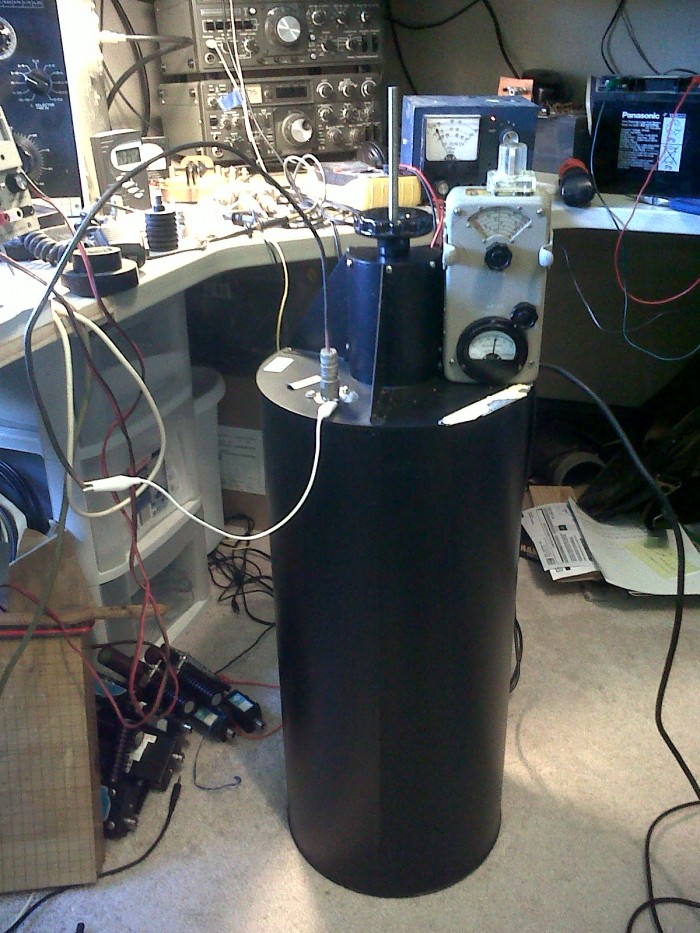[Yesterday’s run: Watson road 3.5 miles]
[Today’s run: Limerock Road 4.0 miles]
I have been a bit worried since I brought home this big conglomeration of VHF resonators, isolators, harmonic filters, etc. One worry that I could do something about was to get one of the resonators and try it out at 2-meter frequencies.
I had been racking my brain for a way to do that. I have VHF transmitters for the amateur bands. So I started out with that. But I was not sure which way to tune the thing. And the band-pass notch is so sharp that I was likely to miss it. What I needed was a wide-ranging signal source.
So then I thought about my old grid-dip meter. A grid dip is an oscillator. You hold it close to a resonate circuit, adjust the oscillator frequency and look for a dip. A dip means that you have found the point of resonance. The way the circuit is built that causes a “dip” in the “grid”, hence it is a grid-dip meter. Sure enough, my GDO has the capability to go up to about 450 Mhz.
I put an antenna-ish loop on one side of my VHF resonate cavity and on the other side I put a 50 Ohm dummy load.
I played around with that a little bit trying to couple the GDO and the loop, and I could not find a dip. The problem there was that the notch is so sharp and the GDO tunes over a wide range, so I was missing it. In my experience using the GDO in a dipper manner is hit and miss. Sometimes I find the dip and sometimes I don’t.
Then I finally had an idea that worked. I hooked up a sensitive RF power meter (the blue box on the bench in my picture) in place of the 50 Ohm dummy load. I just used the GDO as an oscillator and didn’t bother to look for the dip. It worked. I could see a very sharp spike tuning past one particular frequency. I adjusted the tuning plunger and found that I could easily put this VHF resonator in the 2-meter amateur band, or quite a bit below or above. I ended up tuning from about 130 Mhz to above 180 Mhz and I did not go to the uttermost end of travel of the tuning plunger in either direction.
So that was kind of fun. I figured out a way to roughly measure the resonate frequency. And I confirmed that these resonators work on the 2-meter ham band. And–I now know that I can use my GDO as a test oscillator well into the VHF band (Not as good as a real signal generator, but it worked.)
Here’s the picture of my lash-up. The beige box is the GDO. The black canister thing is the VHF cavity (it is about 3 feet high in this picture). My single-wire antenna-ish loop is hanging out of the left port on top of the can. You can’t see the output port, it is behind the GDO.
